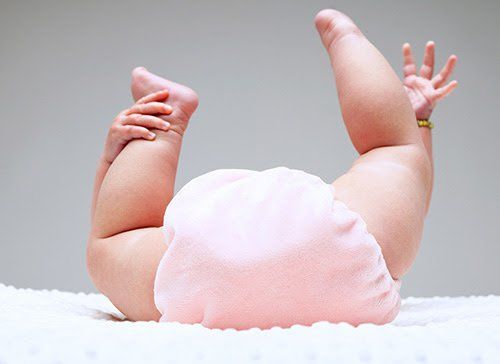This is an automatically translated article.
You'll miss out on many things as your baby grows, but changing a dirty diaper probably isn't one of them. However, don't be in a hurry, as teaching your daughter how to use the potty takes time and patience, as well as a reasonable level of cooperation and motivation from your child.1. Determine the best time to start potty training your little girl
Teaching your daughter how to use the potty requires your time and patience as well as your child's reasonable level of cooperation and motivation.Lucky for you, experts say girls start potty training earlier than boys because girls aren't easily distracted. Children who have older siblings to look at and imitate may also have an easier time toilet training.
The key to success in potty training begins only when your daughter is actually able to do so. While some children may start as young as 18 months, others may not be ready to learn until they are 3 or 4 years old.
There is no reason to try to start too early. Studies show that when parents begin potty training before their child is physically or emotionally responsive to it, the process simply takes longer.
In other words, you will reach your destination at the same time, no matter when you start. So the first thing to do is assess whether your daughter is ready for potty training.
Once you've determined that your daughter is ready, focus on spending time on toilet training on her own. Make sure your child's routine is well established - if he's just starting kindergarten or has a new sibling, he may be less receptive to change or feel too pressured to tackle a challenge this new.
Avoid periods when the child's natural resistance is high and wait until the child seems open to new things. To teach a girl to potty train, follow the steps below.
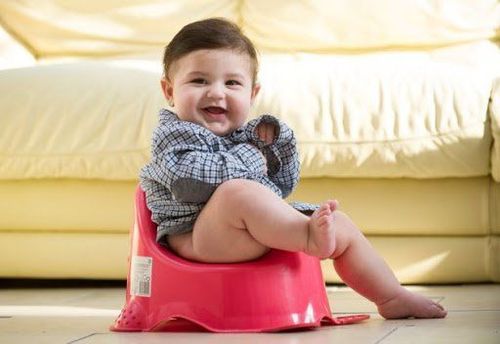
Việc dạy con gái bạn cách sử dụng bô đòi hỏi bạn phải có thời gian và sự kiên nhẫn cũng như mức độ hợp tác và động lực hợp lý của con bạn
2. Steps to teach girls to sit on the potty
2.1. Let her watch and learn how to use the potty Toddlers learn by imitating and watching you use the toilet, this is the first step and it comes naturally. When talking about body parts, it's important to be precise. If you teach her to call her clitoris "small stuff" when everything else has a more formal name, she might infer that there's something embarrassing about her genitals.If your daughter sees her brother, father or one of her friends from kindergarten or daycare standing tall in the toilet, she will most likely want to try to pee in the bathroom. standing position.
You'll have to clean up a few messes this way, but she'll probably understand pretty quickly that she doesn't have the equipment to stand when she pees and you won't have to involve her in an argument.
If she continues to stand while urinating, have her watch you and explain how mothers and their daughters must sit down to urinate.
2.2. Buy the right potty Most experts recommend buying a baby-sized potty, especially since your baby can feel more on her own and will also feel more secure with her than a toilet seat large size. Because many children are afraid of falling into the toilet and their anxiety can interfere with potty training.
Restrooms can be dangerous places for curious toddlers, so always supervise them when they go to the bathroom.
If you want to buy an adapter seat for your regular toilet, make sure the child feels comfortable and secure and that the seat is securely attached. If you choose this option, you will need to provide your daughter with a stool or step as it is important that she can move easily in and out of the toilet at any time. need. Children also need to stabilize with their feet to push when they have a bowel movement.
You may want to pick up a few picture or video books for your daughter, which can help her understand all this new information more easily. You can even buy a doll and a miniature potty so your child can easily visualize what you are teaching.
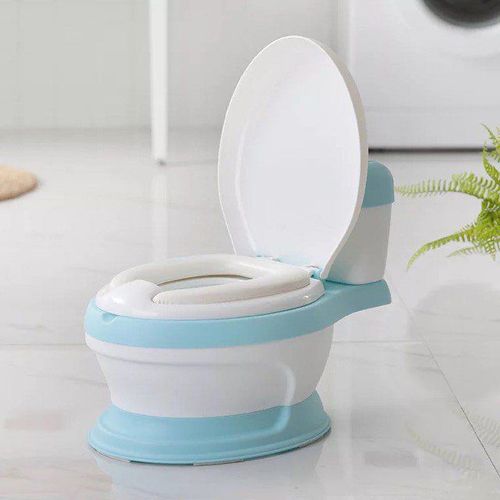
Hầu hết các chuyên gia khuyên bạn nên mua một chiếc bô cỡ trẻ em, đặc biệt hơn là bé có thể cảm thấy là của riêng mình và cũng sẽ cảm thấy an tâm hơn với bé
After your daughter has practiced this way for a week or so, you can suggest that she try sitting on the potty with her pants down. If she seems to be resisting, avoid the temptation to pressure her. That will only set up a power struggle, which can derail your entire training process.
If your daughter has a favorite doll or stuffed animal, try using it to demonstrate potty training. Most children love to watch their favorite toys go through activities, and they can learn a lot more this way than from you telling them what to do.
Some parents even build makeshift toilets for dolls or stuffed animals. Then, while your daughter sits in the chair, her favorite toy can be sitting on her own potty.
2.4. Motivate your baby with cool underwear Help your daughter focus on the benefits of potty training by taking her to a special job, buying panties. Let her know that she can choose whatever she wants. Underwear with your favorite movie character or bright design is usually a good choice.
You can talk about the outing ahead of time so that your daughter gets excited about being potty-aged and wearing the same underwear as her mom or sister.
2.5. Set a training schedule Getting your daughter off diapers will depend on your daily schedule and whether your daughter is at home or daycare. If your child is in daycare, you'll want to coordinate your strategy with your child's teacher.
You will have to decide whether to use the method of switching back and forth between diapers and panties or the complete change method that is to wear underwear the entire time of the day. Some experts recommend switching to disposable underwear, which is basically like a diaper but can be pulled up and down like underwear.
But there are also opinions that say it's best to immediately switch to old-fashioned cotton underwear or training pants, both of which will allow your daughter to feel when they're wet right away. Of course, that makes it more likely that you will have to clean up more.
You will have to decide what is best for you and your baby. At least for a while, you'll want to keep using diapers at night. And your baby's babysitter or preschool teacher may have their own opinion about when to switch to underwear at school. At this point, you need to discuss to agree with the teacher on when to let your child wear underwear instead of diapers.
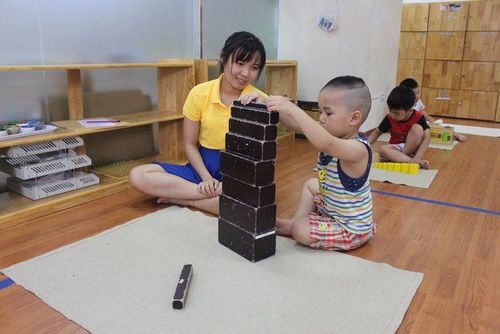
Nếu bé đã đi nhà trẻ, hãy thống nhất với giáo viên về thời điểm cho trẻ mặc quần lót thay vì bỉm
If this seems too complicated for her and it can happen to many other girls because it requires remembering to go in a certain direction, teach her to pat the area dry. after urinating.
Although uncommon, bladder infections seem to be more likely to occur in girls during potty training. If your daughter needs to urinate often or feels a sudden urge to go and says she hurts, complains of stomach pain, or starts to wet her pants after having good bladder control, you need to take her to the doctor.
2.7. Spending time naked You can let your child have fun wearing nothing. Place the potty in an easily accessible area while your child plays and encourage him to sit on it regularly. Of course you need to be prepared for the floor to get wet. You should also allow children to play naked in places that are not damaged by moisture or by covering carpets and furniture with plastic.
You should watch for signs that your baby needs to go to the toilet such as jumping up and down on the spot, clutching his legs or swaying from side to side. Then use these cues to suggest that it's time to potty train.
You can do this for days in a row, in the evenings when the whole family gets together or just on weekends. The more time your child spends without a diaper, the faster she will learn to use the potty.
2.8. Celebrating victory During potty training, your daughter is bound to have a few accidents, but eventually she will know the accomplishment of taking the toilet into the potty. Celebrate this moment by being like a celebration of victory. Reinforce the idea that she's hit a milestone by rewarding her with a "big kid" favor such as being told an extra bedtime story.
But try not to overdo it, or your child will start to feel anxious and lack of awareness under all the attention when he goes to the bathroom.
2.9. If she doesn't succeed at first, try again. As with any other skill, the more potty-training your daughter uses, the better she will be at it. But there are some things you can do to help her find it easier to use the potty. For example, dress your child in loose-fitting clothes that he or she can take off easily, or buy underwear that's a bit looser.
If she's still having trouble potty training, don't overreact or punish her. Nothing interrupts potty training faster than making a child feel bad about an accident. Accidents are normal and part of training.
Remember that even kids who have been using the toilet successfully for months sometimes have accidents while engrossed in an activity. If you're feeling down, remind yourself that scolding your child for wetting his pants means you'll probably have to put him on diapers for many more months.
And if both are frustrated, take a few weeks off and try again when you and your baby are ready.
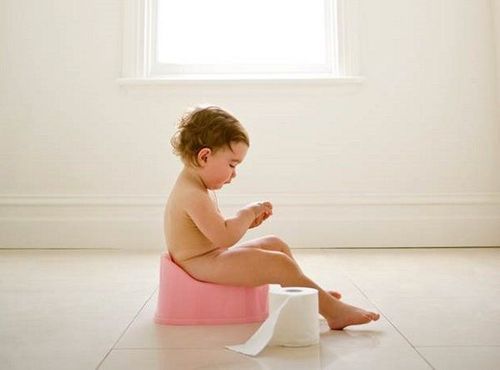
Như với bất kỳ kỹ năng nào khác, cho con gái của bạn sử dụng bô càng nhiều, cô bé sẽ càng giỏi trong việc đó
Put some blue food coloring in the toilet and she will be surprised at how she can turn the water turns green. Or put her favorite book in the magazine rack next to the toilet so she can look through it whenever she has to go to the bathroom. If your child starts to lose interest when he's potty trained well, you might consider offering a reward. One popular method is to use stickers and calendars to keep track of her successes. Every time she goes to the potty, she gets a sticker of her choice on the calendar. Watching the sticker bonus points accumulate will keep her inspired. If the stickers aren't exciting enough for your child, you can offer an extra reward like an outing to her favorite place or a toy she wishes for when she accumulates enough stickers or keeps her pants on. dry for a number of consecutive days.
2.11. Transitioning to Nighttime Potty Training Once your daughter has started doing a good job of potty training during the day, you're ready to move on to the next stage. Wait until your baby is potty trained, then start checking diapers in the morning and after naps to see if they're dry. Many children begin to dry their pants during naps within six months of learning to use the toilet.
Training at night is more complicated because it depends on whether the girl's body can hold urine for a long time and how deeply she sleeps. If your daughter wants to try sleeping without a diaper, let her do it. If you're concerned about her getting your mattress dirty, an absorbent mattress cover can help.
If, after a few nights of experimentation, you find your daughter isn't ready to keep her pants dry at night, put her diaper on at night without judgment. Tell her that her body can't quite handle this next step and reassure her that she will soon be old enough to try again.
If your child stays dry for three to five nights, make it a new goal to have them wear "anywhere, all the time" underwear. You need to support your baby so he can stay dry by limiting drinking water after 5pm and going to the toilet before he goes to bed.
2.12. By the time your baby is ready to say goodbye to diapers altogether, she's accomplished a lot.
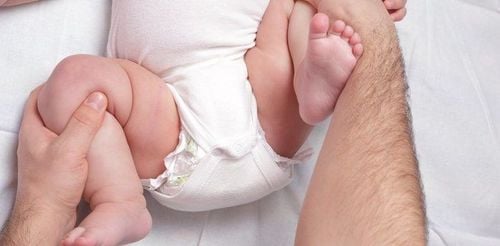
Vào thời điểm con bạn sẵn sàng nói lời tạm biệt hoàn toàn với tã
Or help your daughter choreograph a playful dance around the house and call it the "no diapers" dance. The whole family can do this dance with your baby, it will surely be an unforgettable memory for your daughter.
In addition, in order to prevent diseases that babies often get, parents should pay attention to nutrition to improve children's resistance. At the same time, add supporting foods containing lysine, essential micro-minerals and vitamins such as zinc, chromium, selenium, B vitamins,... snacks and less digestive problems.
Parents can learn more:
Why do you need to supplement Lysine for your baby?
The role of zinc - Guidelines for reasonable zinc supplementation
Please visit the website Vinmec.com regularly and update useful information to take care of your baby and family.
Article referenced source: Babycenter.com






